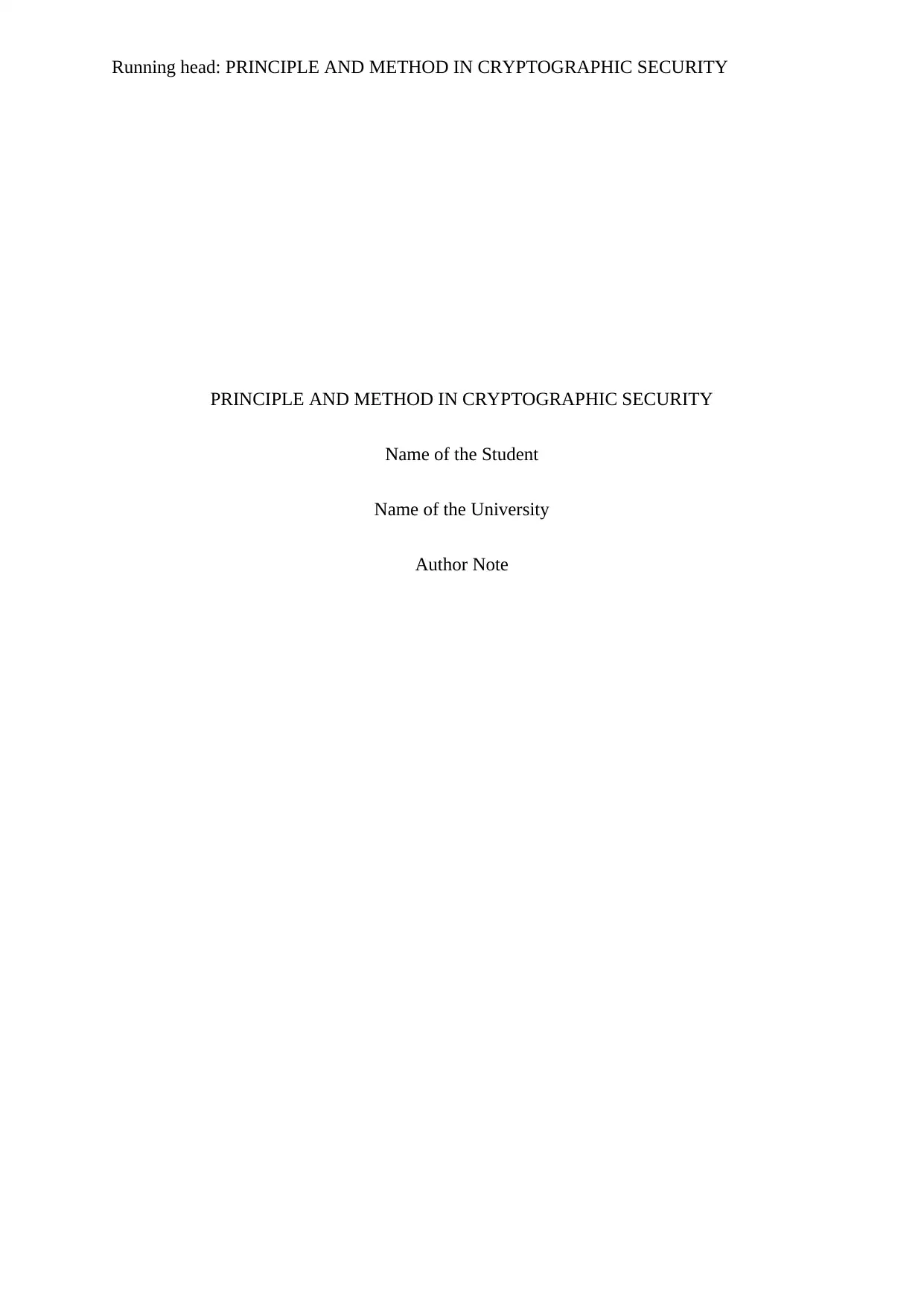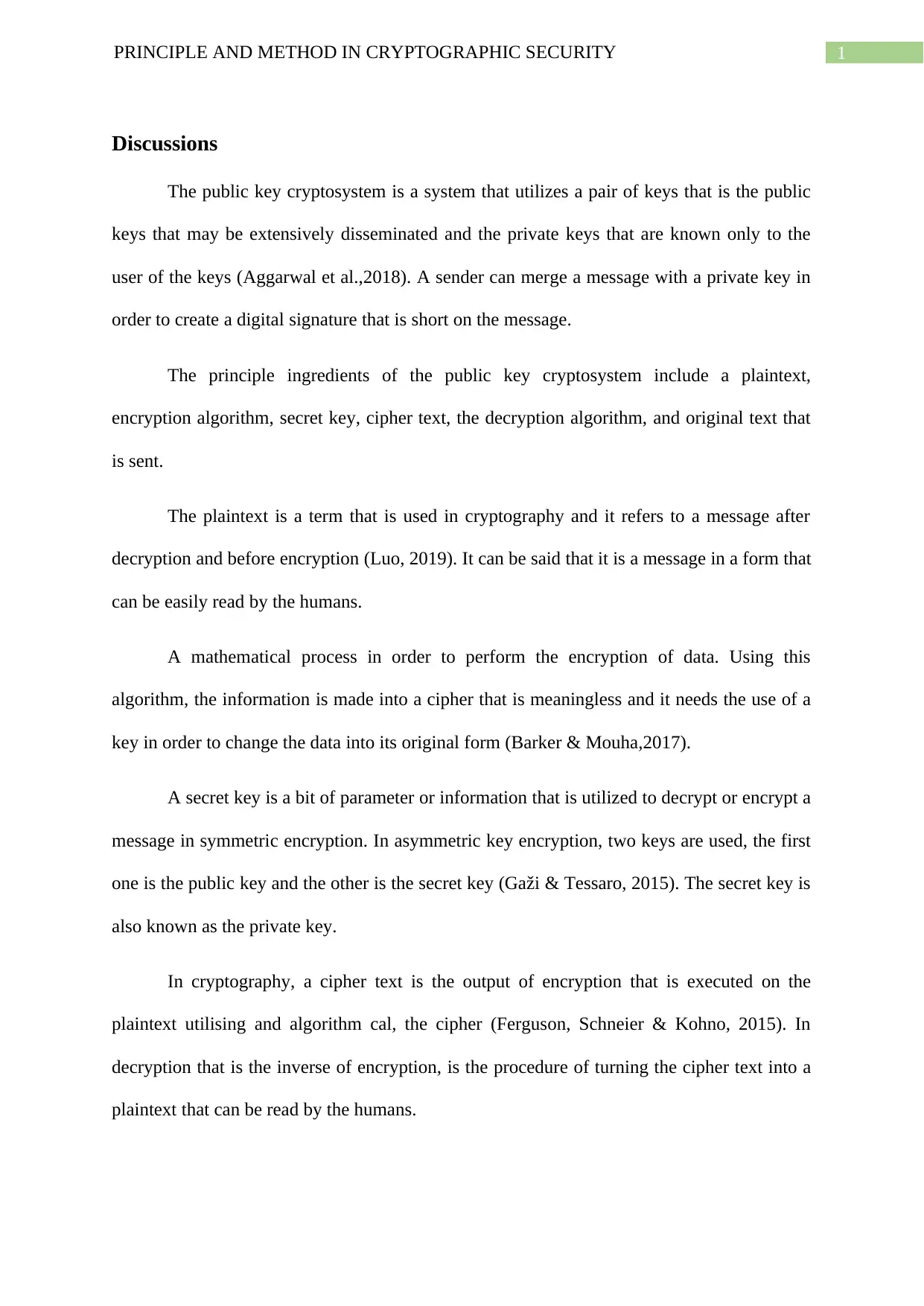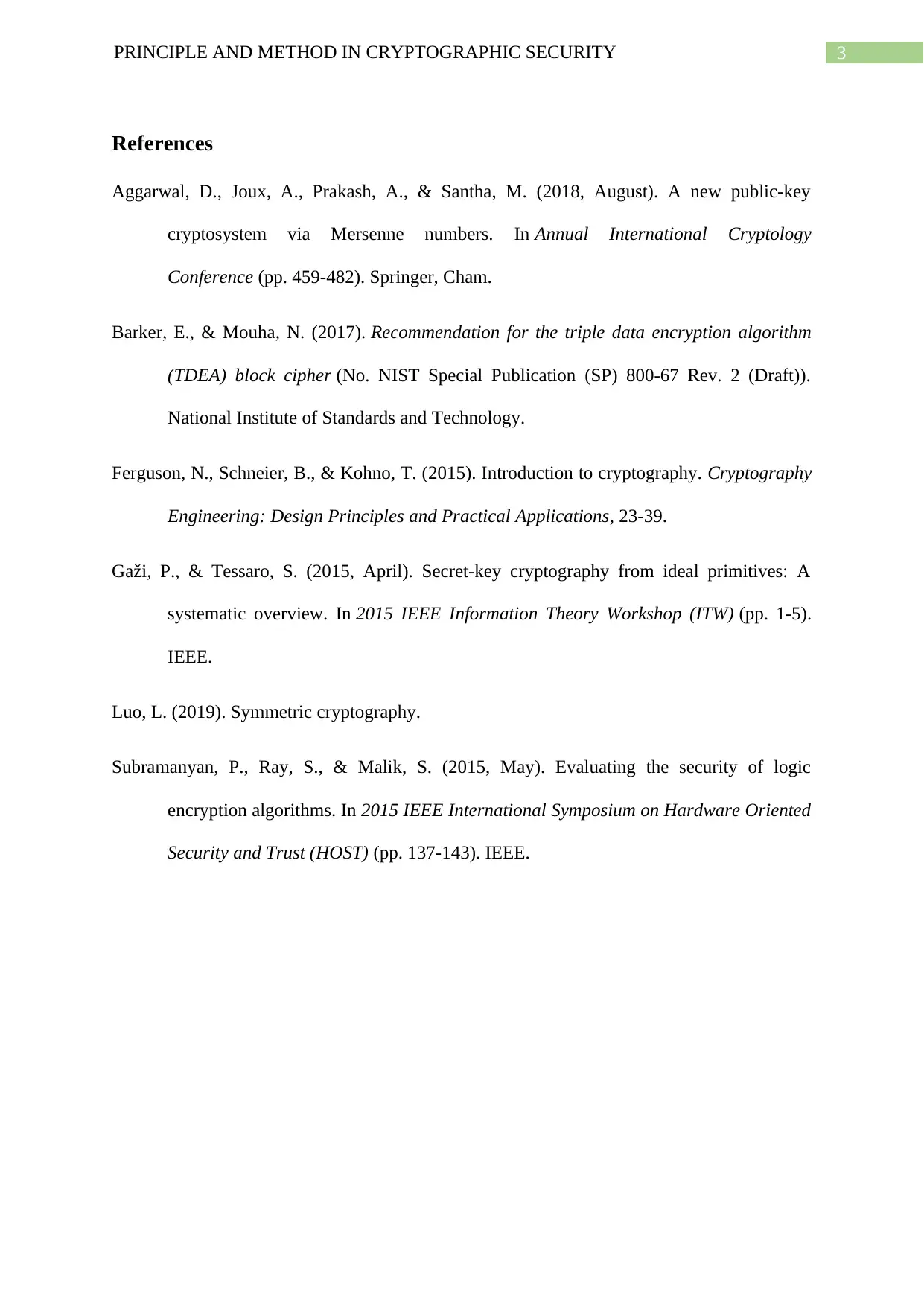Principles and Methods in Cryptographic Security Report
VerifiedAdded on 2022/09/12
|4
|638
|19
Report
AI Summary
This report delves into the core principles of cryptographic security, examining the public key cryptosystem and its components. It defines key terms such as plaintext, encryption algorithms, secret keys, ciphertext, and decryption algorithms, providing a clear understanding of their roles in securing data. The report highlights the use of digital signatures and the importance of encryption and decryption processes. It also references key academic sources to support its analysis. The report provides a foundational understanding of cryptography and offers a concise overview of the terminology and processes involved in securing data through encryption and decryption techniques.
1 out of 4









![[object Object]](/_next/static/media/star-bottom.7253800d.svg)